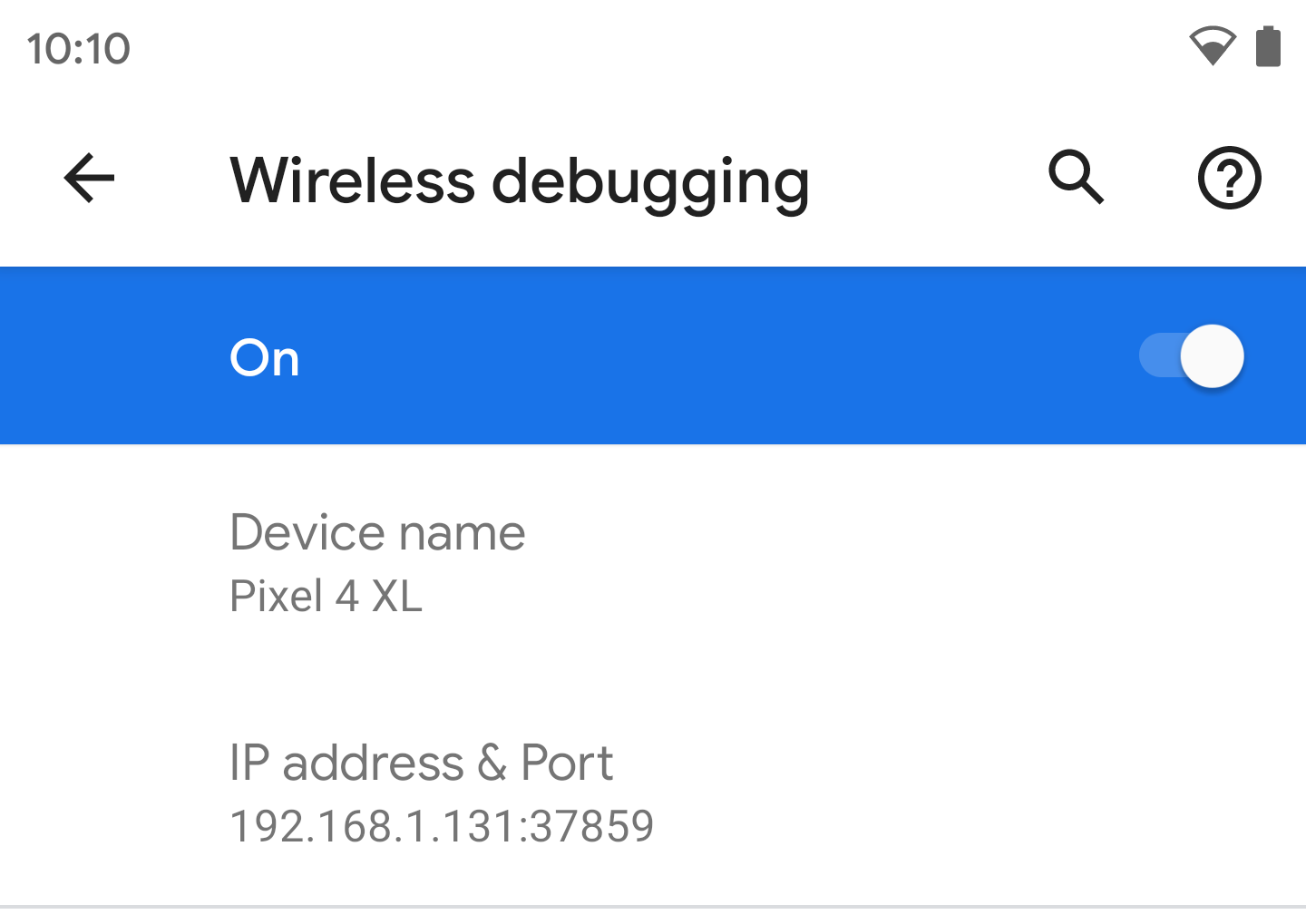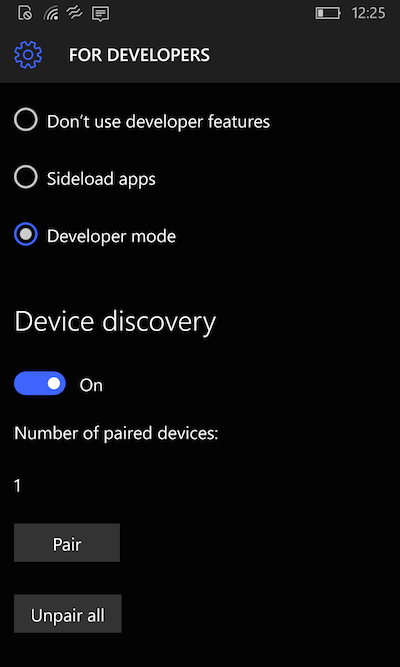Download Android SDK’s ADB and wconnect tool from here. Extract the files in the folder and Open the folder wconnect,then install IpOverUsbInstaller.msi and vcredistx86.exe Open the Windows 10 Mobile’s Settings page -Update & Security For Developers and enable Developers Mode, as well as Device Discovery. ADB stands for “Android Debug Bridge” and it basically just allows you to send commands to your device. ADB is a small tool bundled in the Android SDK as part of the “Platform Tools. It's easy just go to your sdk location like C:UsersUserAppDataLocalAndroidSdk there was to folder namely platform-tools and platform-tools.backup. Open platfrm-tools.backup and copy the adb.exe and paste it to plaform-tools folder and now open the android studio again.studio will run smoothly and without any error Thank you.
- Wconnect And Android Sdk's Adb Toolbox
- Wconnect And Android Sdk's Adb Tool Download
- Sony Wconnect Tool Download
- Wconnect App
- Wconnect And Android Sdk's Adb Tools
- Wconnect And Android Sdk's Adb Tool Installer
Yesterday, we leaked the official documentation for Project Astoria — Microsoft’s Windows Bridge for Android which will allow developers to bring their Android apps to Windows 10 Mobile with minor modifications. Following the leak, the wconnect tool leaked — which is what we need to install Android apps on Windows 10 Mobile. After fiddling around with wconnect and the Android SDKs, I was able to Android app on my Windows 10 Mobile device — and let me tell you, it’s awesome.
Pre-Requisite- SDK (Software Development Kit) should be installed on the machine. ADB is packaged with Google's Android SDK (Software Development Kit). Steps to enable ADB from SDK Manager. Step 1) Open Android SDK folder. Step 2) Double click on SDK Manager. Step 3) From the list of all packages select Tools and mark the checkbox for. Step 1: Download wconnect and Android SDK ADB tool. Step 2: Now unzip SDK, connect tool and install IpOverUsbInstaller.msi and vcredistx86.exe. Make sure ADB commands are working.
For those wondering, I installed Twitter, Slack and Snapchat for Android on my Windows 10 Mobile device.
Installing the Android apps on my Windows 10 Mobile device was fairly easy. I just downloaded wconnect, and the Android SDK (ADB part only), enabled developer mode and used the Command Prompt to install the app. If you’re wondering, no, I didn’t have to modify the APK — I just download it from APKMirror and installed it without even modifying a single line of code.
So how’s performance of an Android app on Windows Mobile? It’s pretty good. I have not noticed any bug on the Slack and Twitter apps yet and everything seems to work pretty well. Unfortunately though, Snapchat doesn’t work as it requires Google Play Services — however, I’m pretty sure someone will be able to get it to work after modifying the app and removing Google Play Services from the app.
Nonetheless, here are some screenshots of the apps:
It’s worth noting that I’ve tried installing YouTube, but, unfortunately, that didn’t work. Nonetheless, Project Astoria is indeed really amazing. The company is expected to release it to a group of testers this fall, however. It’ll be interesting to see if companies like Snapchat use Project Astoria to bring their Android apps to Windows Mobile – however, for now, we’ll just have to wait and see what happens next.

If you want to install Android apps on Windows 10 Mobile, follow this tutorial.
Wconnect And Android Sdk's Adb Toolbox
Android Flash Tool allows you to flash an Android build to your device fordevelopment and testing. To get started, you need a development machine and anAndroid device.
Development machine requirements
Your development machine must meet these requirements:
- Browser: Any browser supporting WebUSB, such as Chrome or Edge 79+.
- Platforms:
- Linux
- macOS
- Chrome OS
- Windows (requires an additional USB driver)
Installing Windows drivers
To work with fastboot and flash devices on a Windows machine, you need acustomized USB driver from the Android SDK. For more details, seeInstall OEM USB drivers on the Android Developers site.
Caution: If you have Android Debug Bridge (adb) installed on your machine, stop the adb service with the command below before proceeding as the service interferes with the flashing process.
If you have Android Debug Bridge (adb) installed on your machine, stop the adb service with the command below before proceeding as the service interferes with the flashing process.Device requirements
You can flash a new version of Android to thesesupported devices:
- Pixel 4 XL
- Pixel 4
- Pixel 3a XL
- Pixel 3a
- Pixel 3 XL
- Pixel 3
- Pixel 2 XL
- Pixel 2

Preparing your device
Before you can flash a build to your device, you must prepare your device:
- EnableDeveloper options and USB debugging.
- Enable OEM Unlocking in the Developer options menu. If yourbootloader is already unlocked, this option is grayed out withBootloader is already unlocked.
- If you're having trouble enabling OEM Unlocking, make sure:
- Your device is connected to the internet.
- Your device has checked in with Google, which may not be the case justbecause your device recently connected to the internet. To force a checkin, enter *#*#CHECKIN#*#* (*#*#2432546#*#*) in the Dialer (no SIMrequired). After entering the number (no need to press call), the textdisappears and a success notification appears.
Wconnect And Android Sdk's Adb Tool Download
Note: Some devices require carrier intervention to be unlocked. Contact yourcarrier for more details.Flashing your device
Sony Wconnect Tool Download
- Connect your device directly to your development machine(no hubs, adapters, extenders, or monitors).
- Open flash.android.com in abrowser on your development machine. It opens to the Welcome page.
- Allow the flash tool to communicate with your test device through adb byaccepting the popup that says Allow site access to your ADB keys inorder to communicate with devices.
- Click Add new device.
- Select your device from the list and click Connect. This list maynot contain the full device name.
- On your device’s screen, select Always allow from this computerand click OK to accept the USB debugging connection.
- Select the connected device in your browser.
- Search for and select your desired build from the list. You can also selectoptions, such as wiping the device or force flashing all partitions.
- Click Install to start the process. The device reboots and enters fastboot mode.
- After Flash Complete appears, disconnect the device from the USB cable.

USB transfer errors
Wconnect App
Sometimes Android devices have trouble communicating through certain USB portsor hubs due to the high throughput of data. To improve reliability:
- Don't use USB hubs. This includes connections through monitors.
- Don't use USB extension cables or adapters if possible.
- Try a different USB port. Rear ports are often more reliable thanfront ones.
- If you're using a USB C port, try a USB A port instead.
Wconnect And Android Sdk's Adb Tools
Back to latest public build
Wconnect And Android Sdk's Adb Tool Installer
If you want to return your Pixel device to the public build you can flash backto the latest factory image and lock your devicehere.
